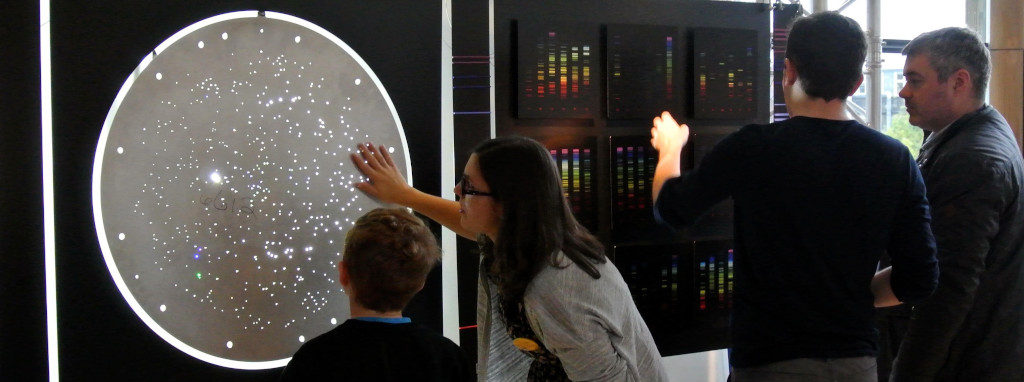SDSS-V is the first facility providing multi-epoch optical & IR spectroscopy across the entire sky, as well as offering contiguous integral-field spectroscopic coverage of the Milky Way and Local Volume galaxies. This panoptic spectroscopic survey continues the strong SDSS legacy of innovative data and collaboration infrastructure.
NEW: We are featured in a new exhibit at the Los Angeles County Museum of Art, Mapping the Infinite: Cosmology Across Cultures!
Data
Our latest data release, DR18 is now live! This is the first data release for SDSS-V and contains targeting data for Black Hole Mapper and Milky Way Mapper, as well as eFEDS spectra and value added catalogs. Find out more about DR18 on the DR18 webpages, and in the DR18 paper.
If you are looking for previous data releases from SDSS-IV, then these are all still available! You can find them on our completed surveys page, and at the SDSS-IV webpages. Completed surveys include the SDSS Imaging and Legacy Survey, Supernova Survey, SEGUE1/2, MARVELS, (e)BOSS, APOGEE-1/2, MaNGA and MaStar.
Our next data release will be DR19, and is currently scheduled for 2025.
News
Milky Way Mapper

A time-domain, optical+IR spectroscopic survey of Milky Way stars of all types.
Program Head
Andrew Tkachenko
(KU Leuven)
Local Volume Mapper

An optical, integral-field spectroscopic survey of the Milky Way and its neighbors.
Program Head
Niv Drory
(University of Texas at Austin)
Black Hole Mapper

An optical time-domain spectroscopic survey of quasars and X-ray sources.
Program Head
Scott Anderson
(University of Washington)
JOIN US!
SDSS-V, like previous SDSS surveys, remains committed to making its data publicly available in a format that is helpful to a broad range of users, from beginner students to both amateur and professional astronomers. However, without extensive federal or other large-scale funding, this commitment is not possible to fulfill without membership contributions from institutional partners. SDSS-V is actively seeking participation from new membership partners. Our institutional partners benefit from early access to proprietary data, participation in the survey planning process, and involvement of their faculty, postdocs, and students in our global science collaborative network.
Policies for joining SDSS-V at a variety of levels can be found in the Joining Document. The general policies for SDSS-V are defined in its current Principles of Operation.
A list of current member institutions can be found on the Affiliate Institutions page.


















